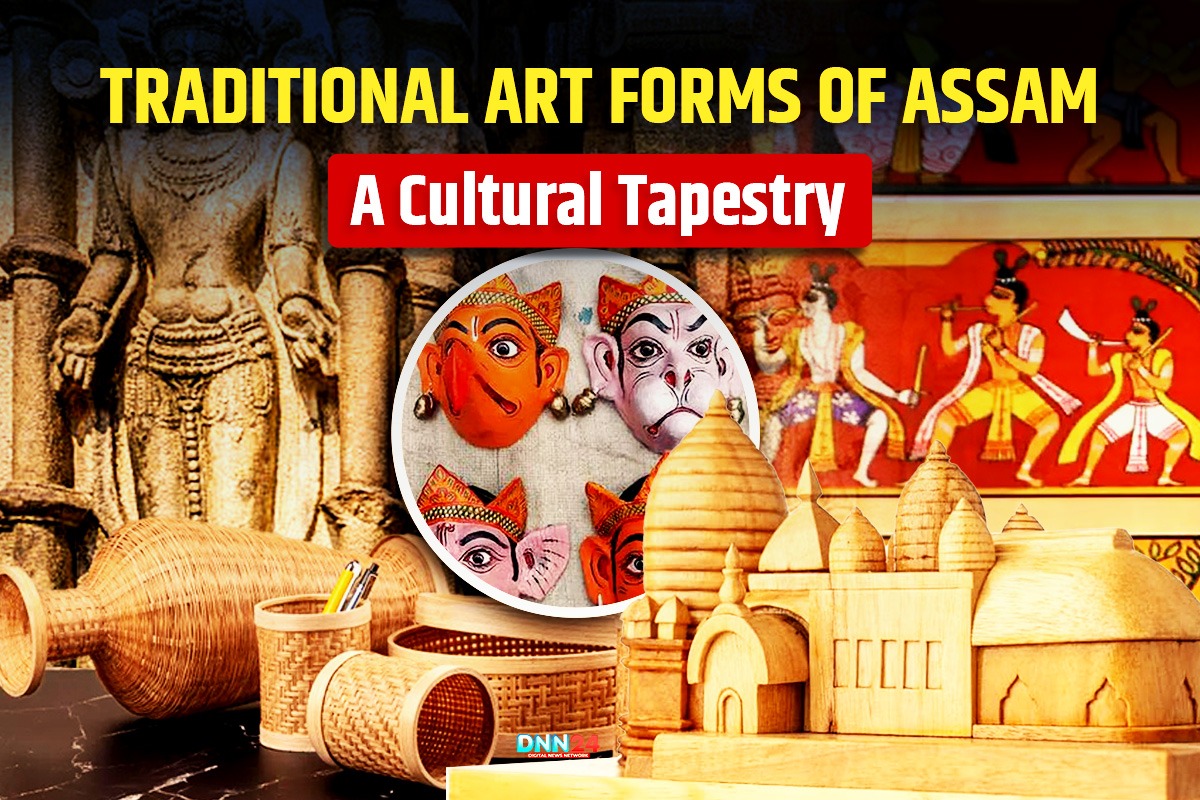Assam uses its fertile valleys and powerful rivers to display its abundant cultural heritage through its many different art forms. Every handmade craft in Assam conveys creative expressions and deep cultural traditions through items such as Muga silk and traditional drama bamboo masks.
The artistic heritage of Assam includes an overview of pottery alongside painting and mask production along with silk weaving and water hyacinth artistry and sculpture and woodcraft traditions and toy-making along with bamboo techniques and metal creations and textiles as well as handloom work. Throughout each subsection the article demonstrates how Assamese identity evolved through the blending of spiritual aesthetics with practical everyday culture.
Pottery: The Earth’s Timeless Art
In Assam pottery practices happen through two dominant communities named Hiras along with Kumhars. The Kumhars produce gods figurines together with clay dolls and domestic containers such as pots and plates by operating potter’s wheels. The craftsmen in Kamrup district specialize in creating intricate terracotta tiles which are essential in building traditional architecture.
Hira community members use a compression process as their ceramic-making technique without employing wheels. Hira women produce clay lighting fixtures together with aromatic containers by using their hands to perform the work alongside basic instruments. The residents of Asharkandi village in Goalpara earn their fame from their beautiful clay dolls that receive natural dye painting before festivals.
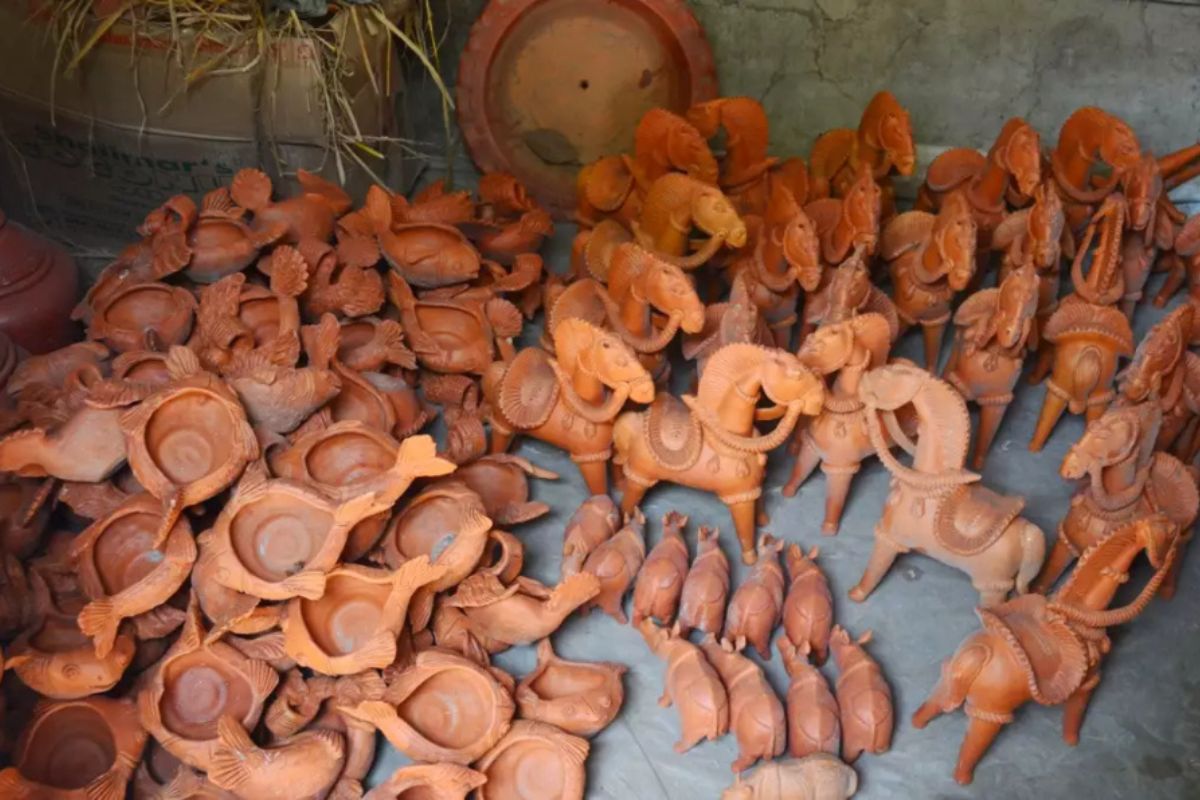
Community members from both regions mix clay with rice husk or sand to stop the items from developing cracks. The handicraft designers dry items under sunlight before placing them in open fires to create a traditional reddish-brown texture. Hira pottery conserves natural organic beauty because wheel usage drives the refinement in Kumhar pottery creation. Craftsmen today explore modern design options by developing wall decorations and decorative vases although they maintain traditional production methods.
Painting: Colors of Faith and History
It is through religious Vaishnavism that Assamese painting developed because monks painted religious manuscripts such as Chitra Bhagavata while using natural dyes. Religious monastic centers in Assam produced the Sattriya painting style which presents Lord Krishna’s stories using simple line drawings and limited flat coloration. Artists draw their colors from minerals where Hengul and Hiatal preserve their bright appearance through several centuries.
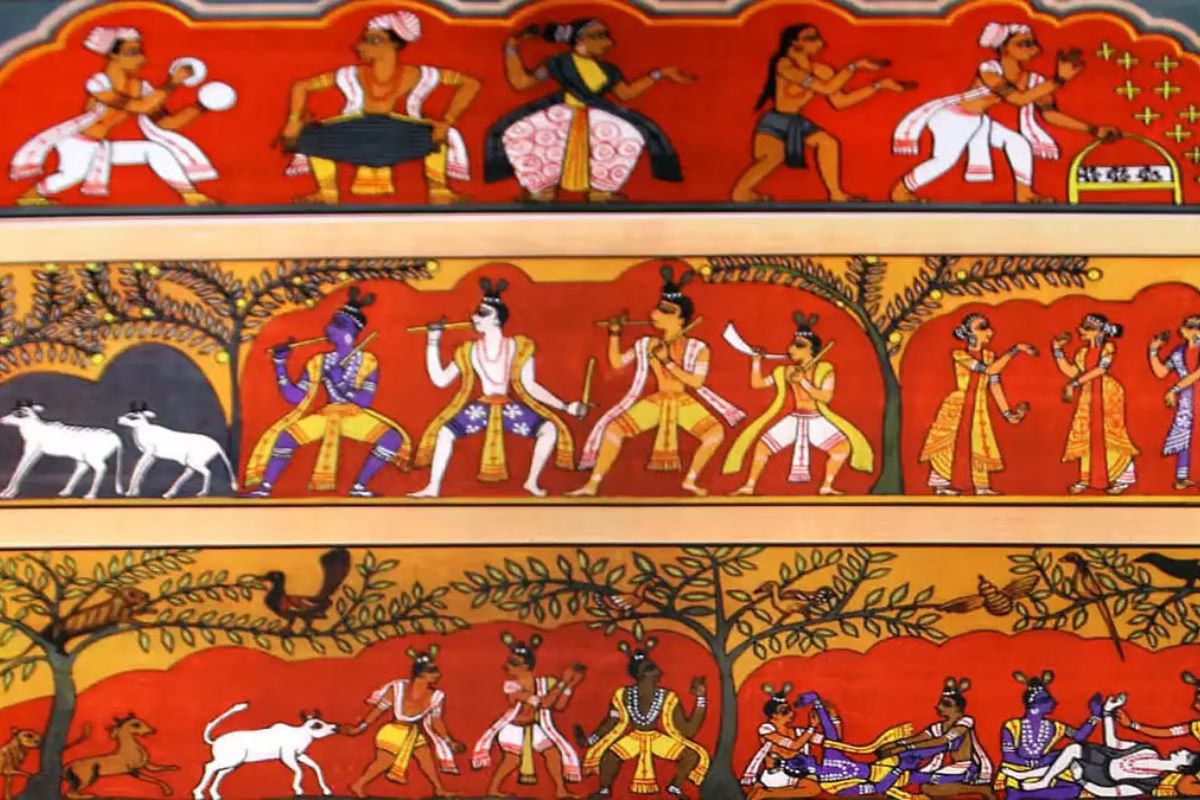
Migrants from Burma introduced the Tai-Ahom painting style that focuses on showing Buddhist themes. A Buddha icon from the 15th century appears among the illustrations of the Phung Chin manuscript which uses tulapat paper. The court paintings commissioned by the Ahom kings incorporated both Mughal artistic elements and local artistic elements. During the 18th century the Hasthividyarnava manual presented animal illustrations which utilized gold leaf decorations for their completion. Modern artist Kishore Kumar Das receives national acclaim by combining ancient traditional elements with contemporary motifs.
Mask-Making: Faces of Mythology
Mask-making stands as the essential element for Bhaona dance dramas that originate from Assam. Artisans who practice the Lakhimi sutra create hexagonal bamboo frames through bamboo strip interweaving. Artists from deity and demon and animal figures by spreading layers of clay and cow dung on these structures. The dried masks receive decorations from artists who use Hengul and Hiatal paints on them and combine peacock feathers and jute fibers for the mask’s hair effects.
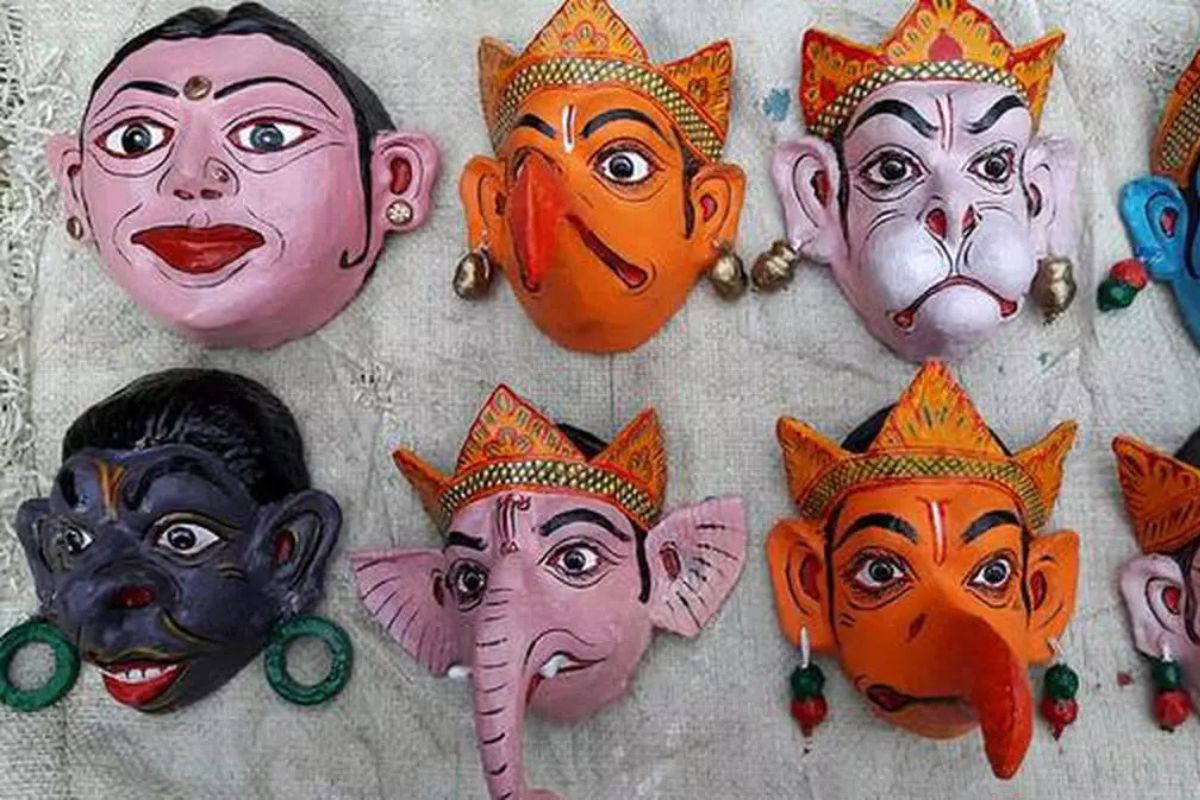
Satras (monasteries) like Majuli’s Samaguri Satra preserve this craft. A single Ravana mask demands a whole month’s work since the scenic eyes on rolling sockets and movable jaw mechanics enhance dramatic effects. The use of synthetic dyes increased because of their cheaper alternative however puristic traditional dyes remain prevalent. Modern museums showcase these masks after they ceased their religious functions from prayer halls.
Silk Weaving: Golden Threads of Pride
Only in Assam does Muga silk known for its natural golden sheen find its origin because it cannot be replicated anywhere on earth. The weaving process of Muga silk occurs when women transform this thread into Mekhela Chadors through their work on loin looms. The complete process requires both the nurturing of silkworms on certain trees and manual thread extraction followed by natural lac or turmeric dye treatment. Eri silk, called “peace silk” as worms aren’t killed, is woven into shawls for winter.
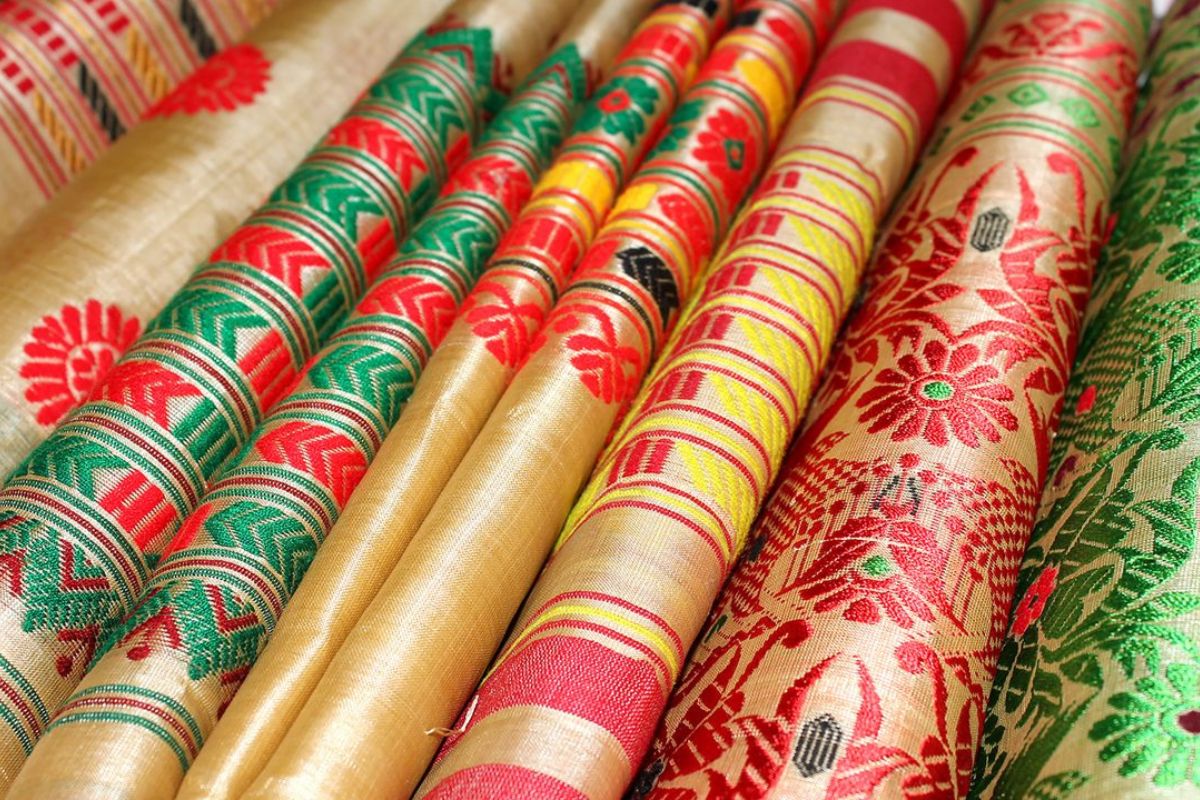
The silk crafting center of Sualkuchi in Assam maintains constant activity while weavers produce elaborate designs of Jaapis on their weaving machines. Gandhiji praised Assamese weavers as “artists weaving dreams,” a testament to their skill6. Bodo and Rabha tribes decorate their textiles through the use of geometric patterns which serve to showcase tribal heritage. Handwoven silk fabrics continue to be preferred choices at festive events and wedding ceremonies even when power looms exist.
Water Hyacinth Craft: Turning Weeds into Wealth
Water hyacinth that once became an environmental problem for Assam’s water sources has now been successfully transformed into bags, mats and baskets. The plant harvesters dry collected stems for two weeks before splitting them to extract fibers. Hand craft procedures produce these products while following processes comparable to bamboo production methods. The annual training programs held by NEDFi enable them to teach 600 artisans each year thus enhancing rural economic growth.
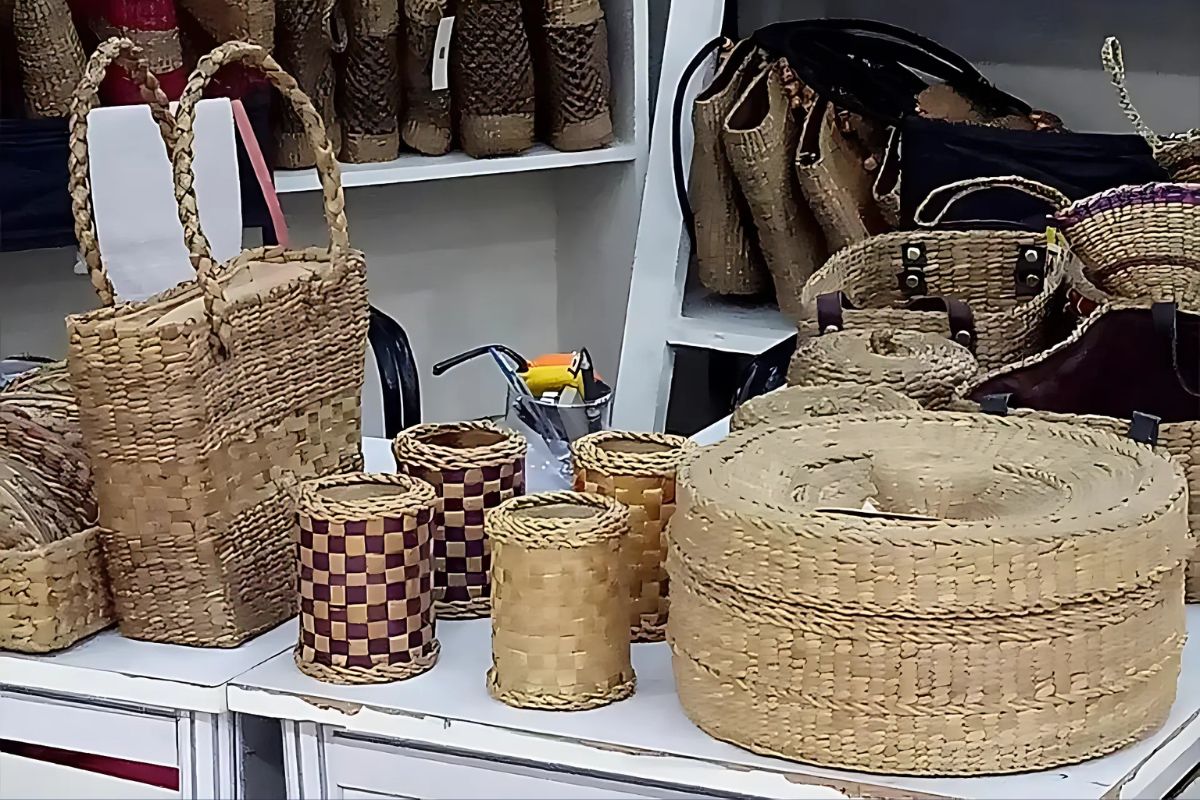
The European market receives eco-friendly furnishings from the manufacturer in the form of laptop sleeves and lampshades. A hectare of water hyacinth fields produces 200 tons of material every year thus making it an eco-friendly natural resource. The craft serves two functions by cleaning rivers and by enabling self-help groups for women to gain self-reliance.
Sculpture and Architecture: Stone and Faith
Various traditional stone sculptures from Assam are showcased at Kamakhya Temple alongside Rang Ghar which dates from the Ahom era. Seven levels of the Talatal Ghar royal palace include arched gateways as well as secret passageways. The Satras maintain single-block wooden statues of Krishna which they use as idols.

Artists today unite religious symbols with nonrepresentational shapes through their work using both soapstone and brass materials. Public spaces in Guwahati now display statues of historical figures like Lachit Borphukan, inspiring youth.
Woodcraft: Temples and Tools
Woodcraft in Assamese tradition includes decorative temple entrances embossed with lotus patterns but also includes metal kitchen pieces such as Xorai trays. Members from the Khanikar community originally employed by Ahom kings produce wooden pieces featuring elephant or peacock patterns. The ritual events at Satras include both carved wooden pillars alongside wooden thrones.

Different kinds of wood need prolonged seasoning in order to protect them from termite damage. Modern urban boutique stores sell rosewood and teak decorative screens as well as jewelry boxes but not in Assam anymore.
Traditional Toys: Clay and Imagination
During Bihu celebrations Asharkandi creates popular clay figurines which wear miniature versions of Mekhela Chadors. In addition to clay figurines and toy carts with floral artwork the Hira community produces. Children throughout Majuli enjoy playing with both bamboo puzzles as well as traditional spinning tops. The toys hold their place despite market competition from plastic imports due to their environmentally friendly quality.
Bamboo and Cane Craft: Nature’s Flexibility
Bamboo, Assam’s “green gold,” is woven into furniture, fences, and musical instruments. Assamese culture finds symbolic representation in the Japi which dancers commonly wear. The bending of cane material leads to the production of hexagonally woven baskets and sofa sets which are exported worldwide. Youth training facilities instruct people in new bamboo bicycle creations that fuse traditional elements with contemporary engineering techniques.

Metal Crafts: Fire and Forge
The religious rituals make use of Bell metal items including Kalah (water pots) and Bota (bowls). The people of Karbi Anglong develop brass pieces in the shape of dragons for jewelry. Barpeta silversmiths spend multiple hours on each set of Thuriya filigree earrings by doing intricate wire work.
Handlooms and Textiles: Threads of Identity
Assam produces both traditional cotton Gamosa towels and the locally known towels with red Phulam motifs that symbolize hospitality. Traditional Mishing tribal skirt patterns are expressed through zigzags in designs of Ege Rasson. Handloom cooperative organizations guarantee just wages for weavers while they restore traditional textile designs through Miri Gimnakh and others.
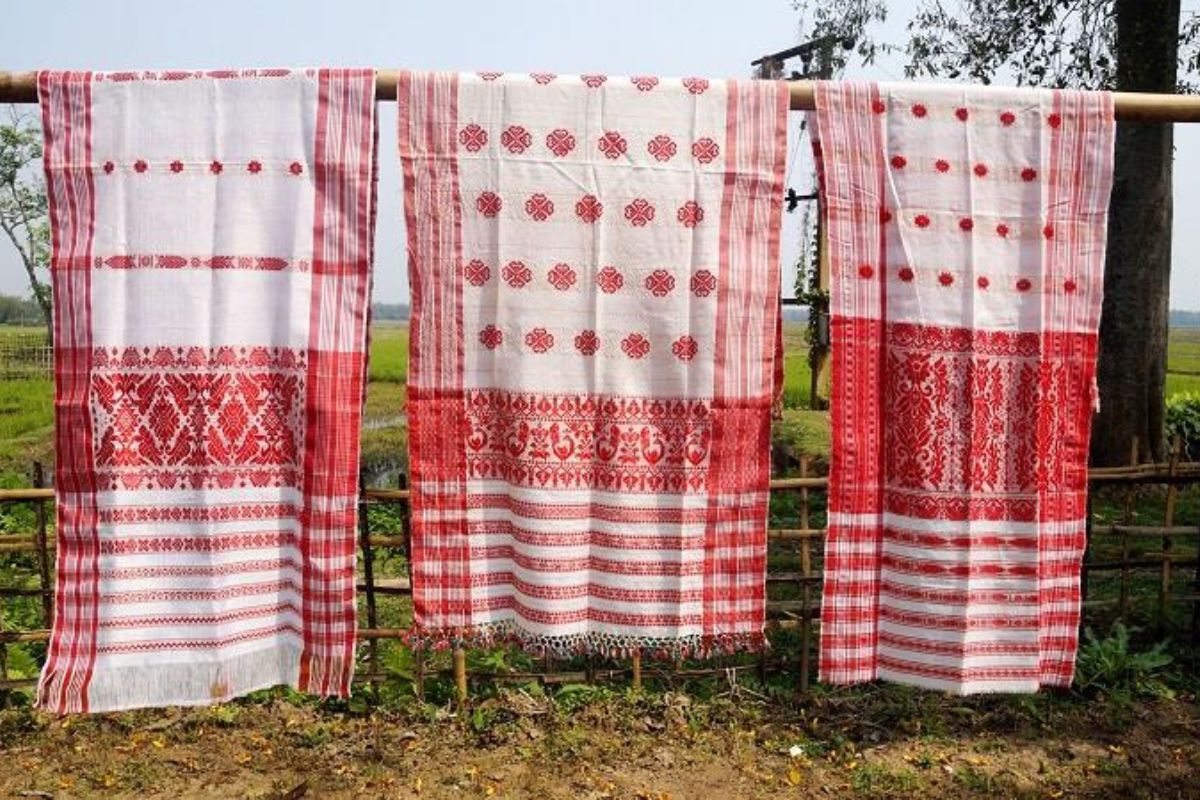
Weaving Dreams: The Loom’s Song
In Assam weaving represents a calm art form because traditional looms have been transmitted across different generations. Communities throughout the villages sing songs about thread work activities as a demonstration of their weavers’ achievements. Under the Eri Silk Mission initiative Assam works to develop itself as a worldwide silk center that merges cultural silk production with modern technology.
Conclusion: Preserving Heritage
The traditional art forms of Assam encounter difficulties due to the availability of inexpensive imported products along with artificial materials in the market. The artisans of Assam continue to adapt their practices by adopting online platforms for mask manufacturers while pottery studios function as educational platforms.
Supporting these artistic expressions ensures the survival of traditions that infuse every handmade mask and vessel as well as weaving with Assamese cultural essence. The cultural life of Assam becomes richer day by day as water hyacinth evolves into valuable objects and silkworms weave pure gold threads.
Also Read: The Diverse and Unique Art Forms of Bengal
You can connect with DNN24 on Facebook, Twitter, and Instagram and subscribe to our YouTube channel.

